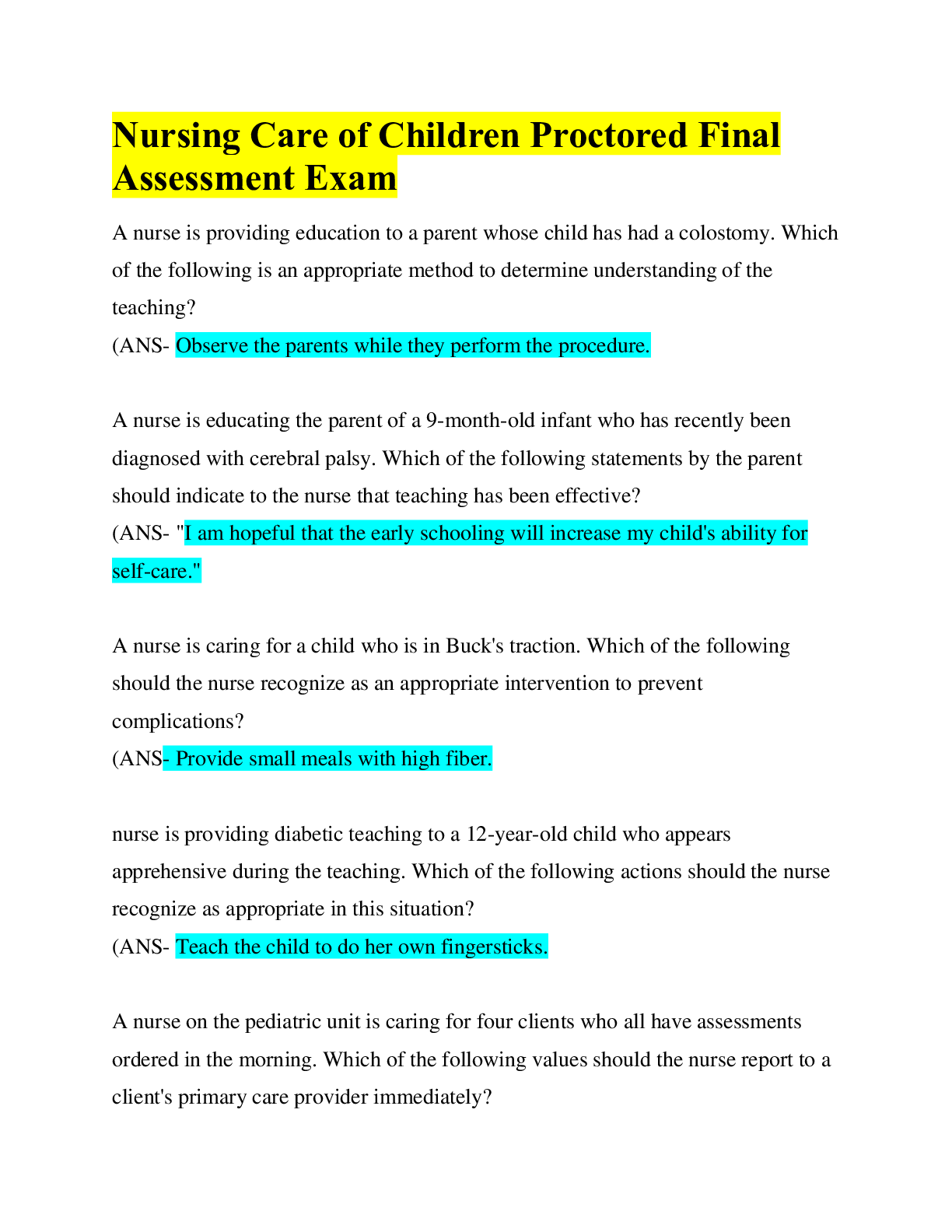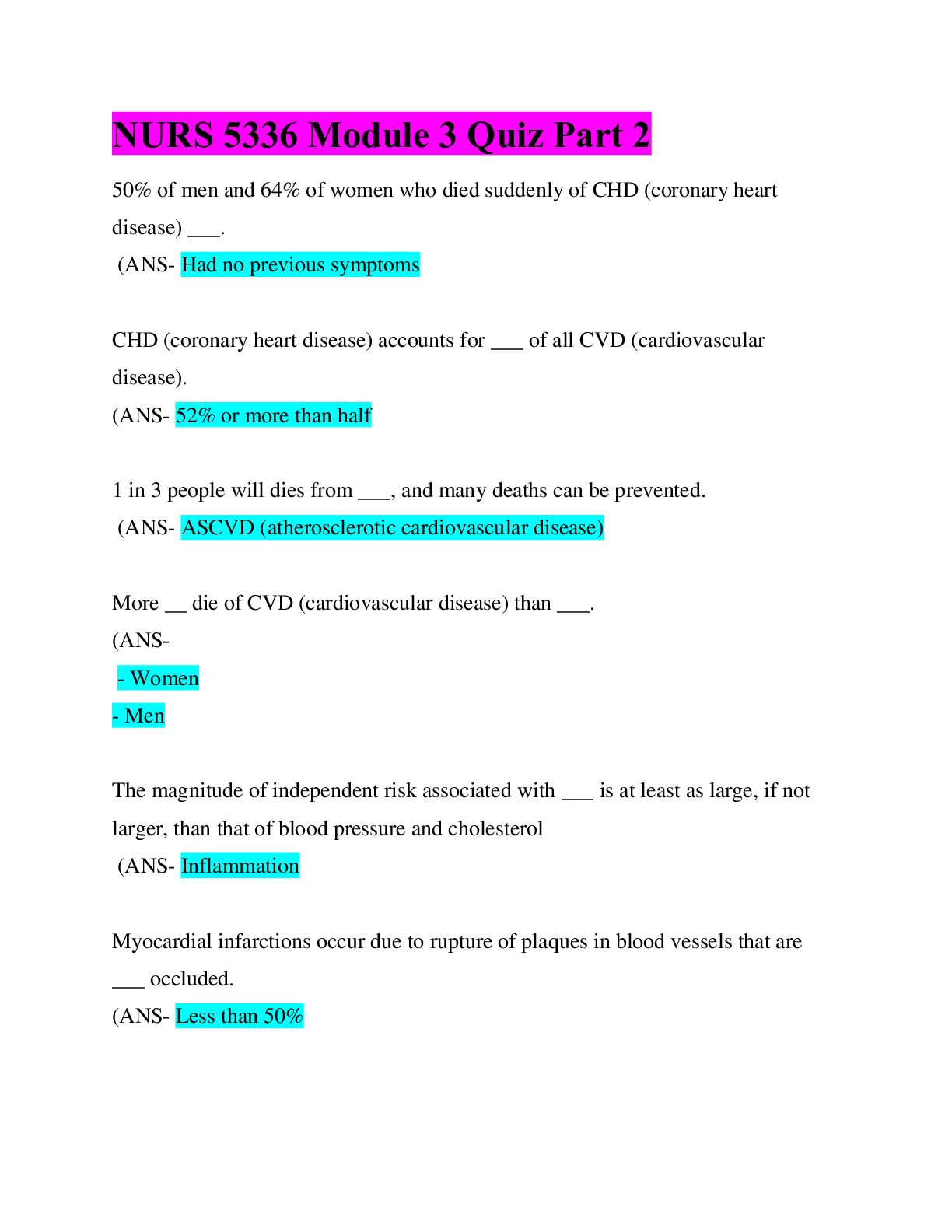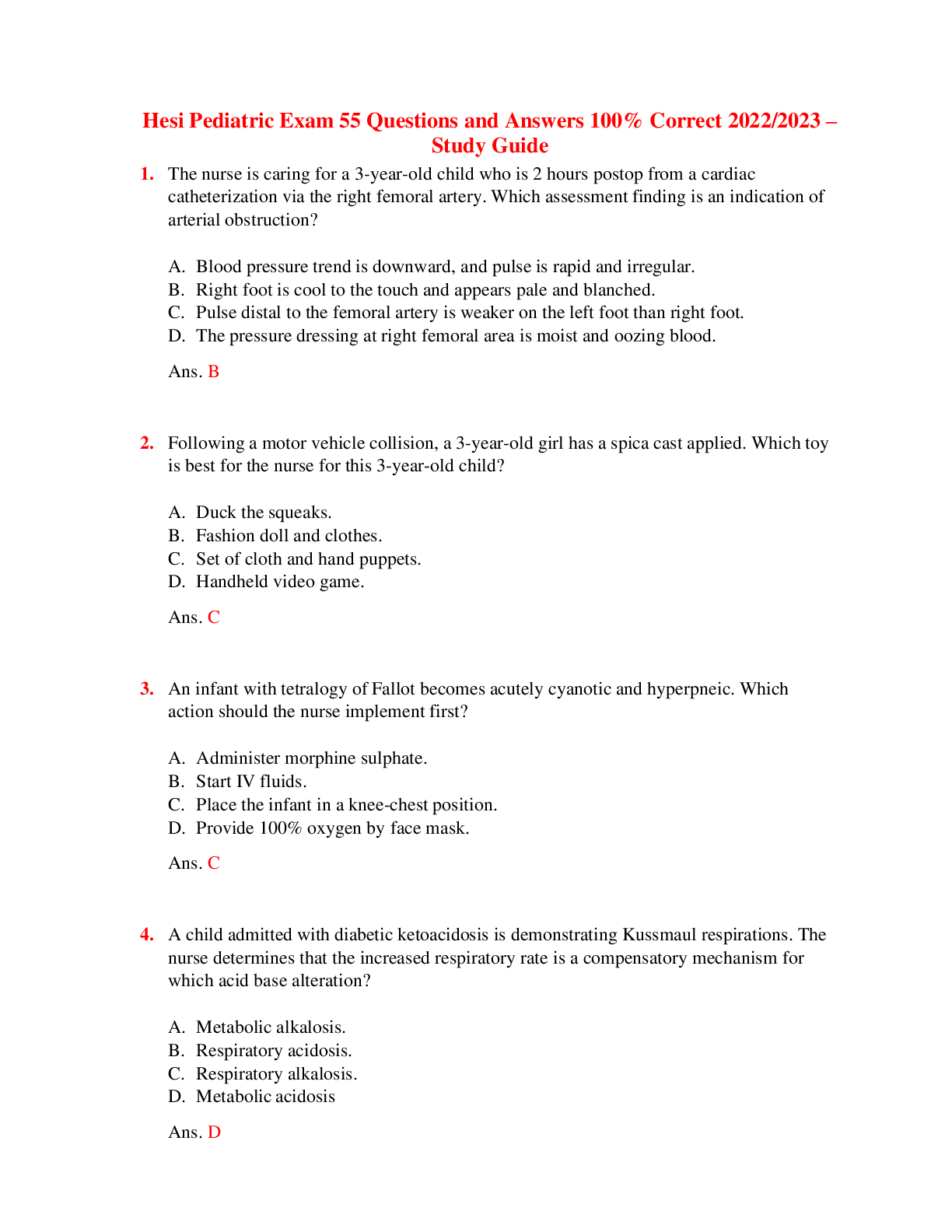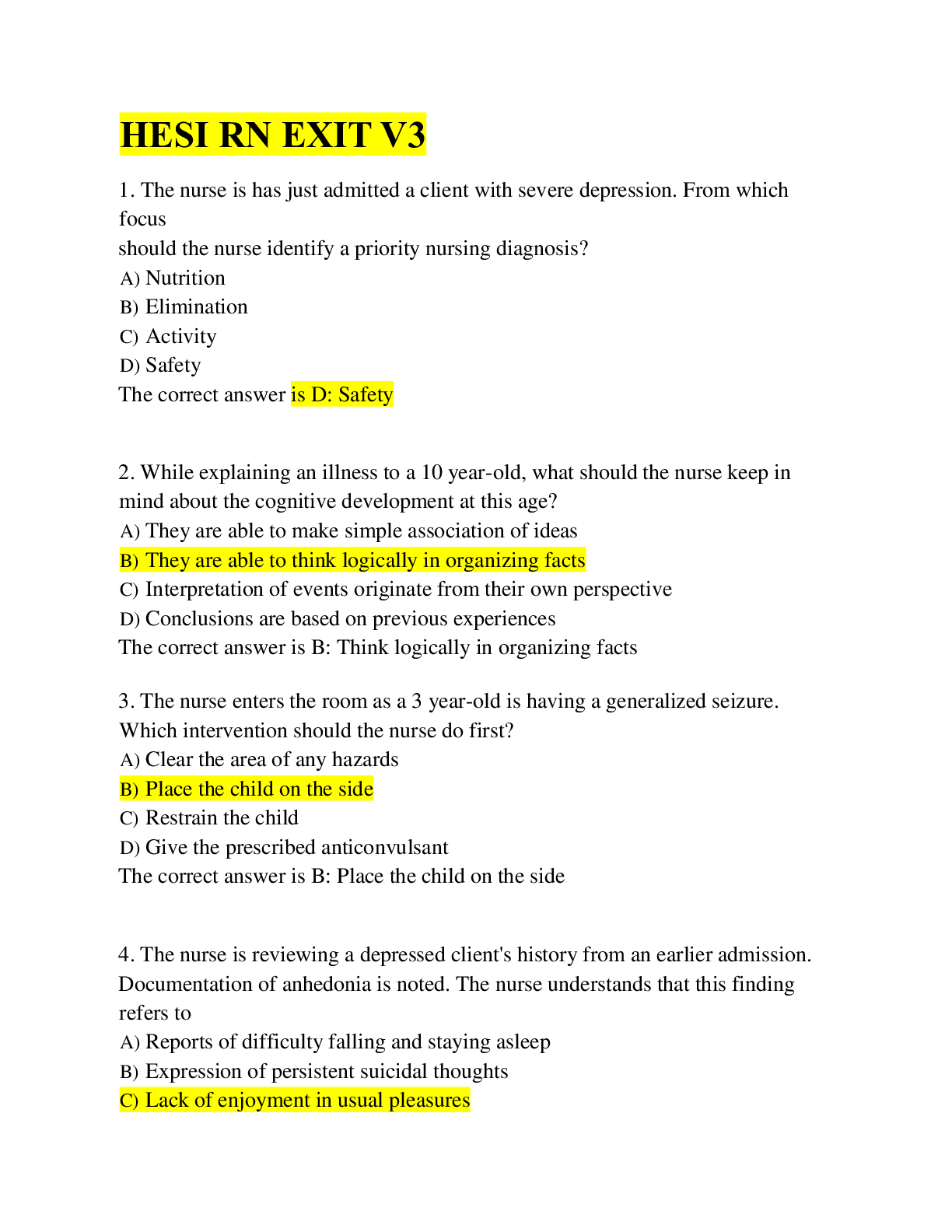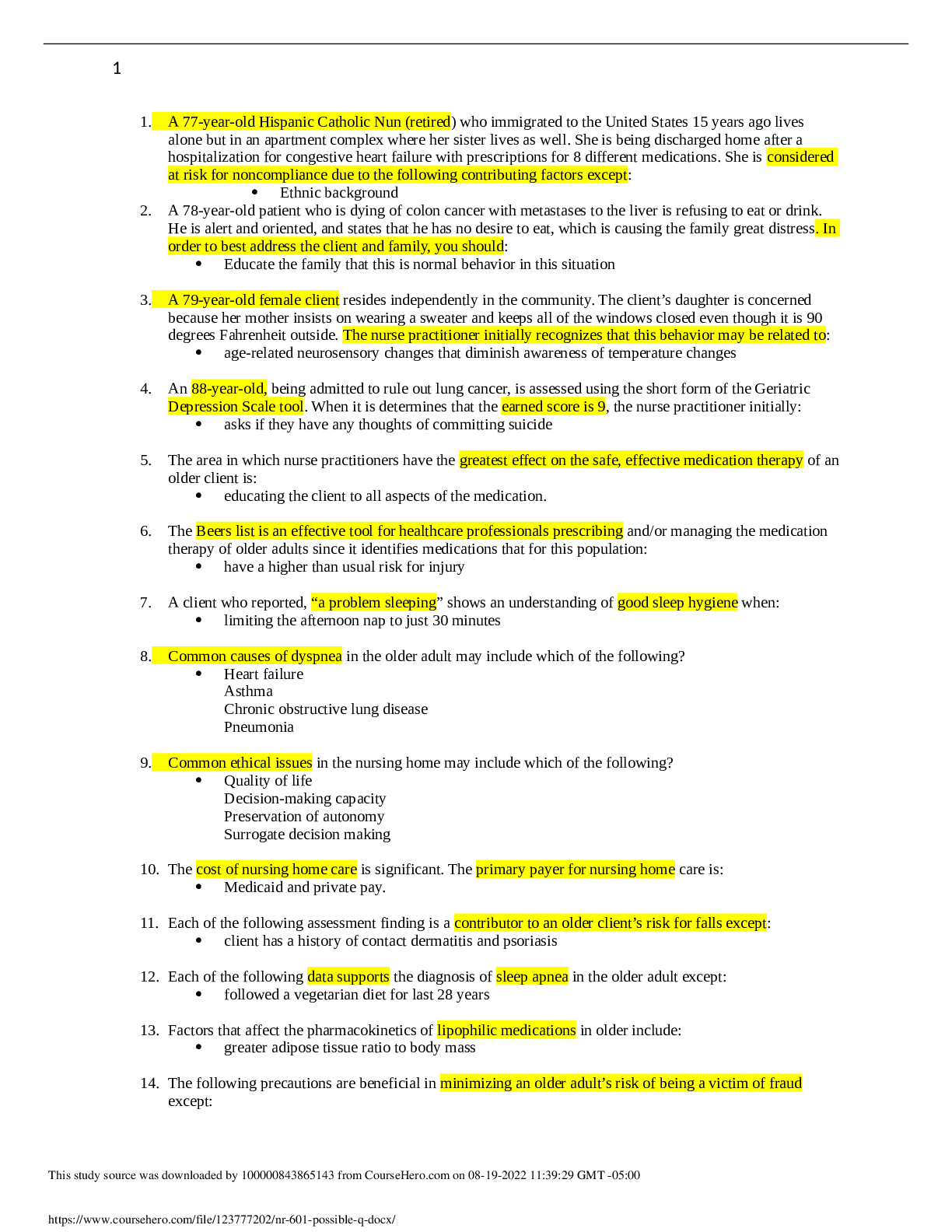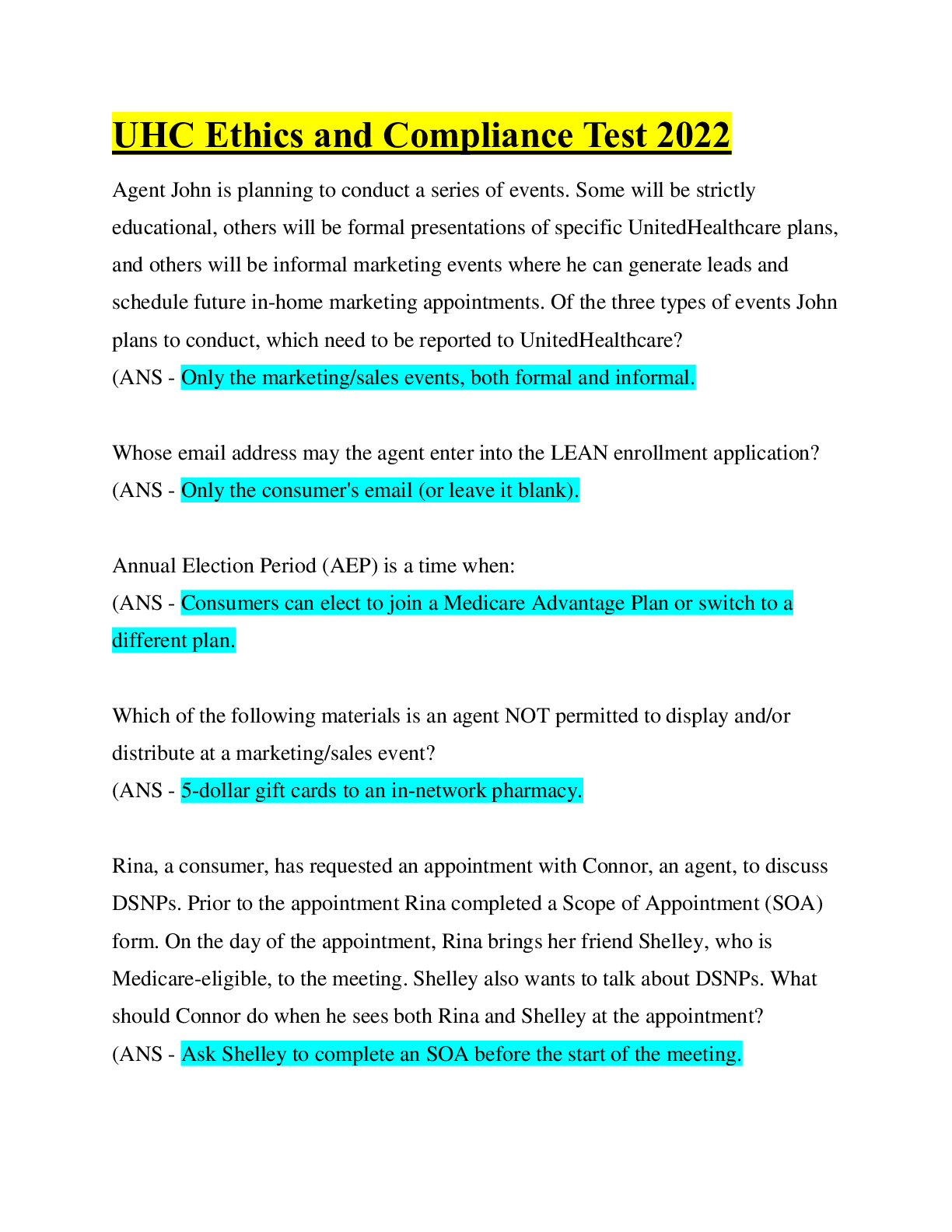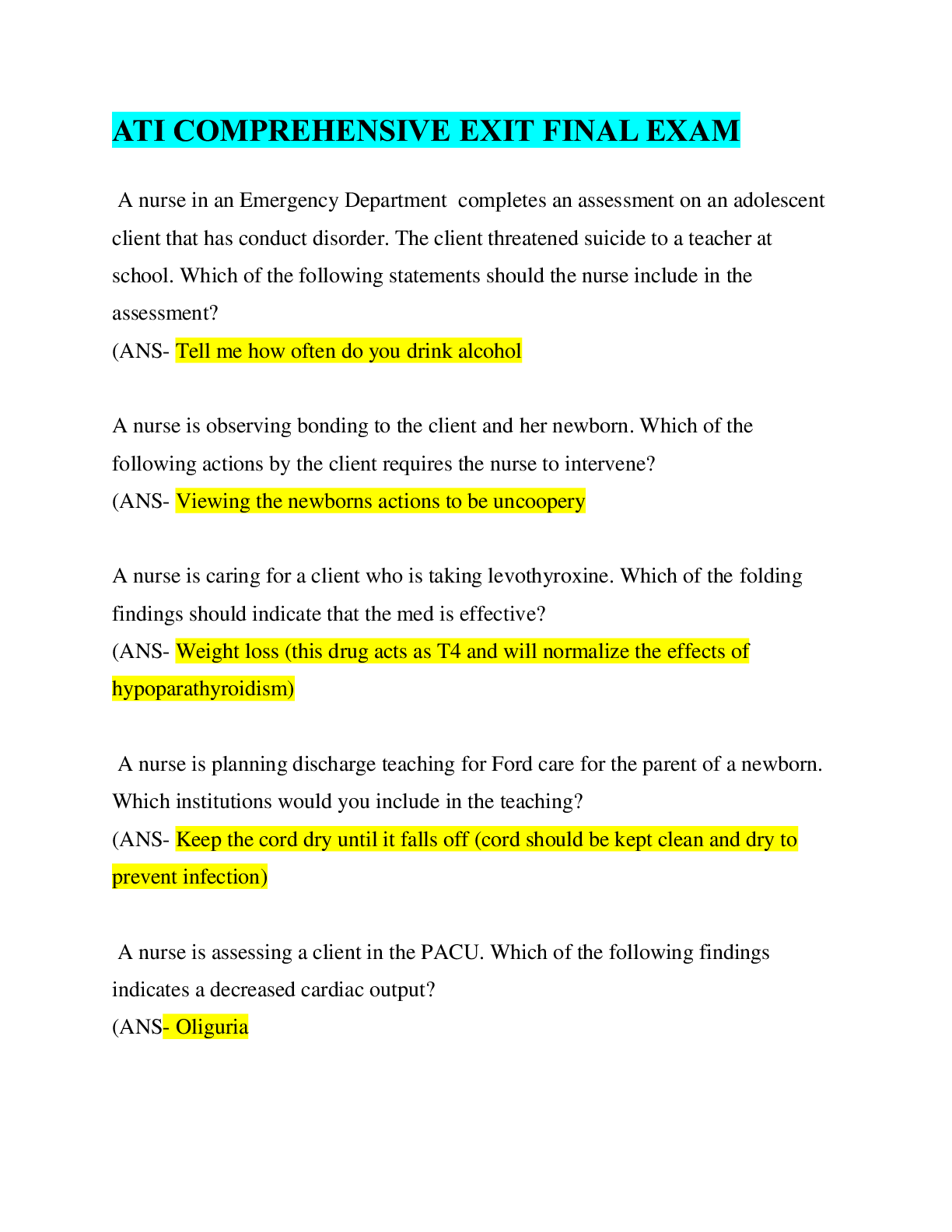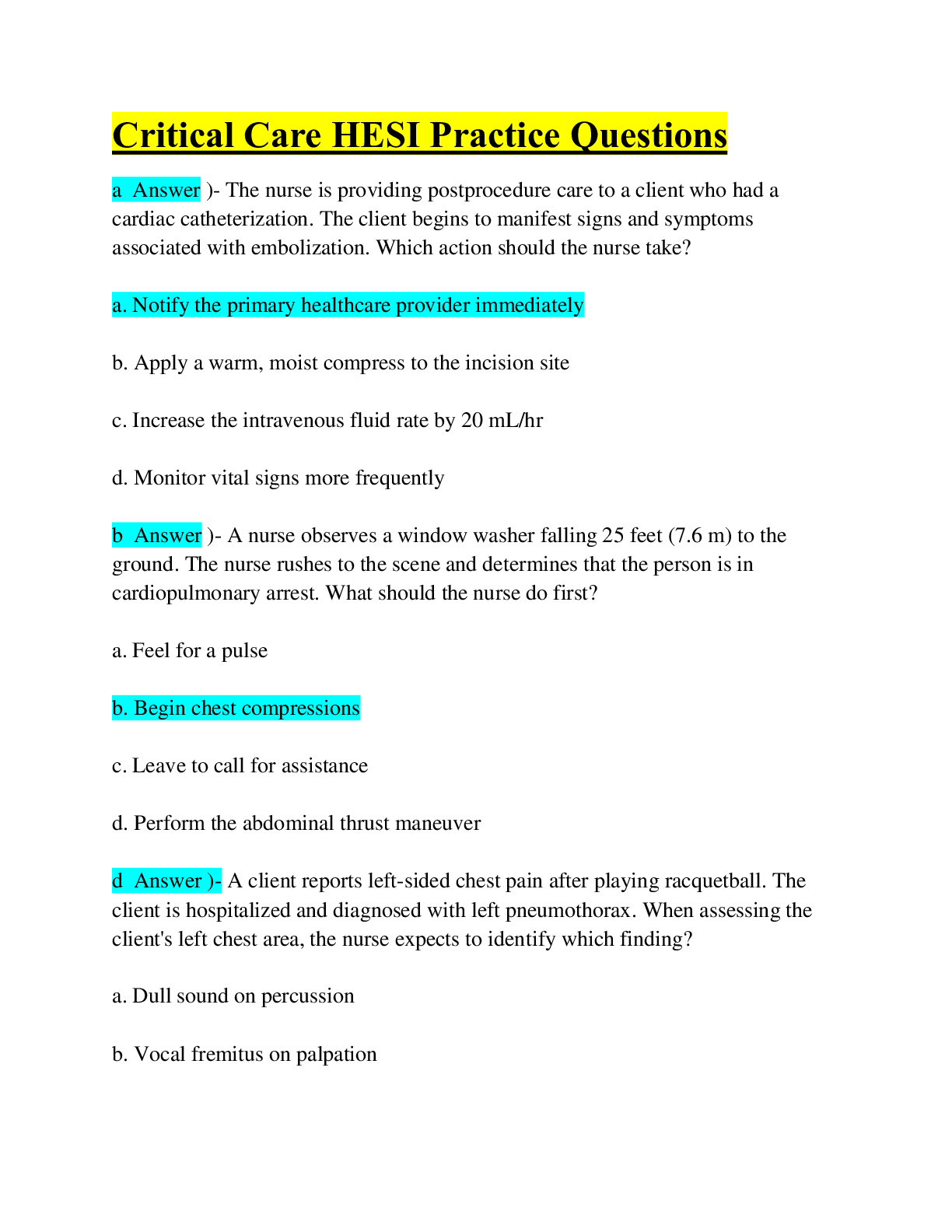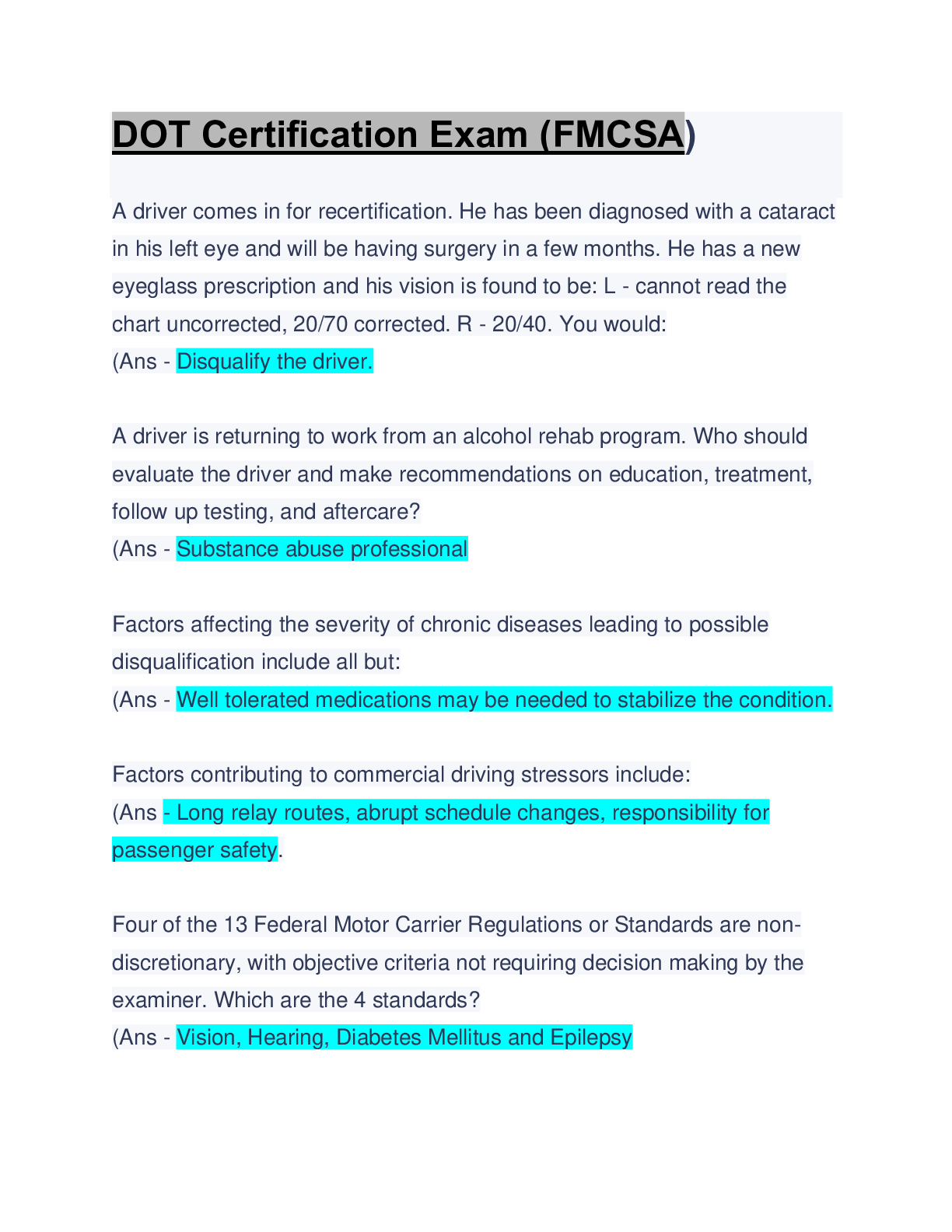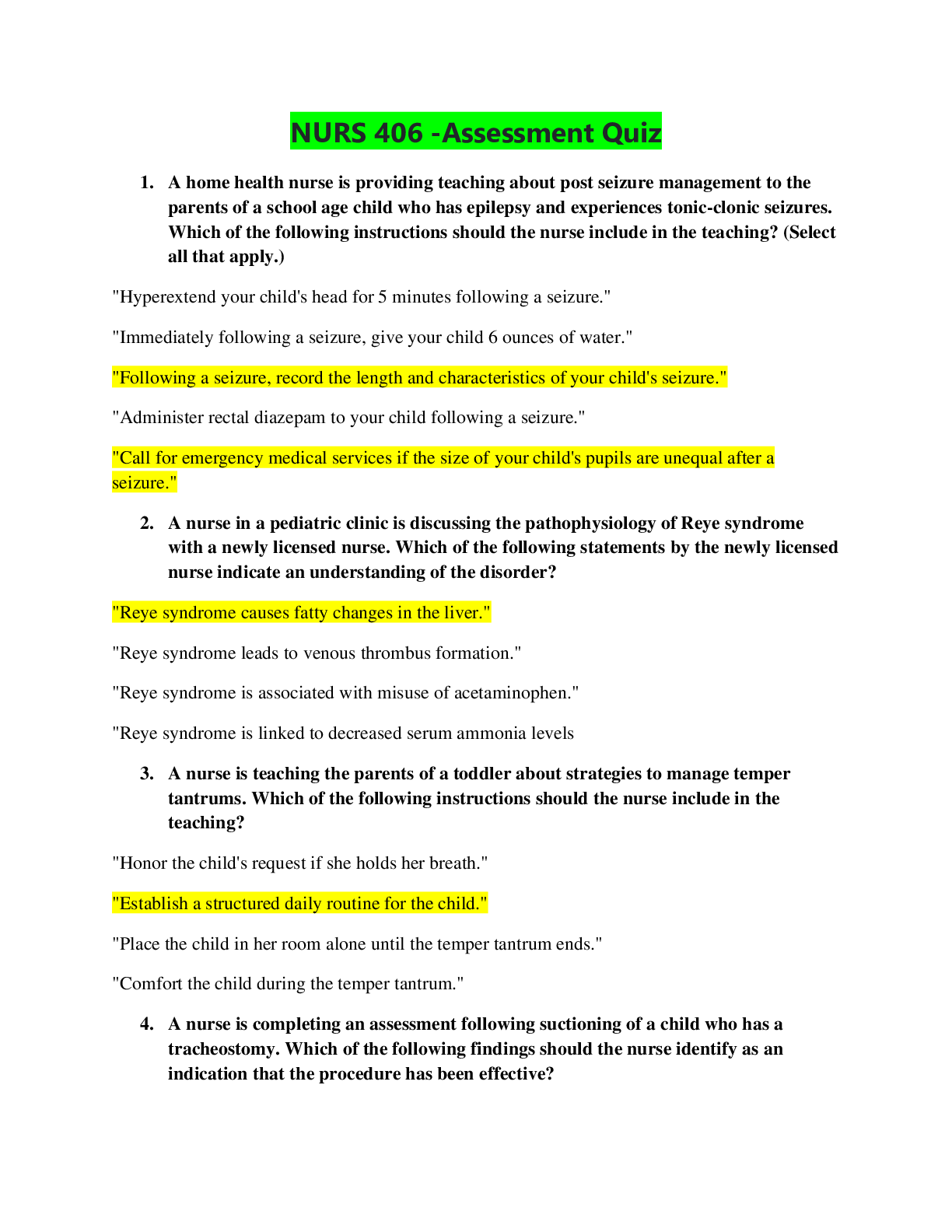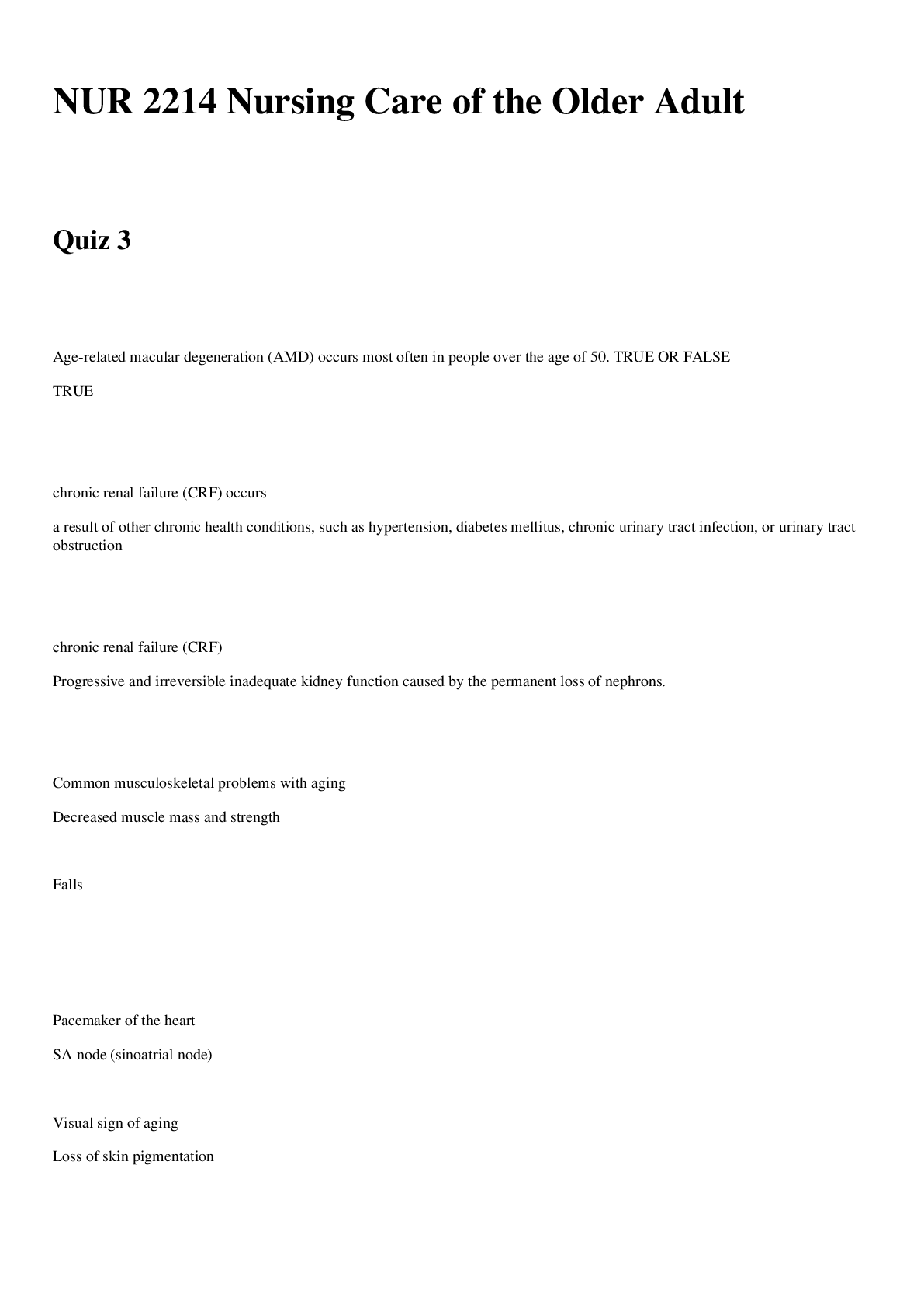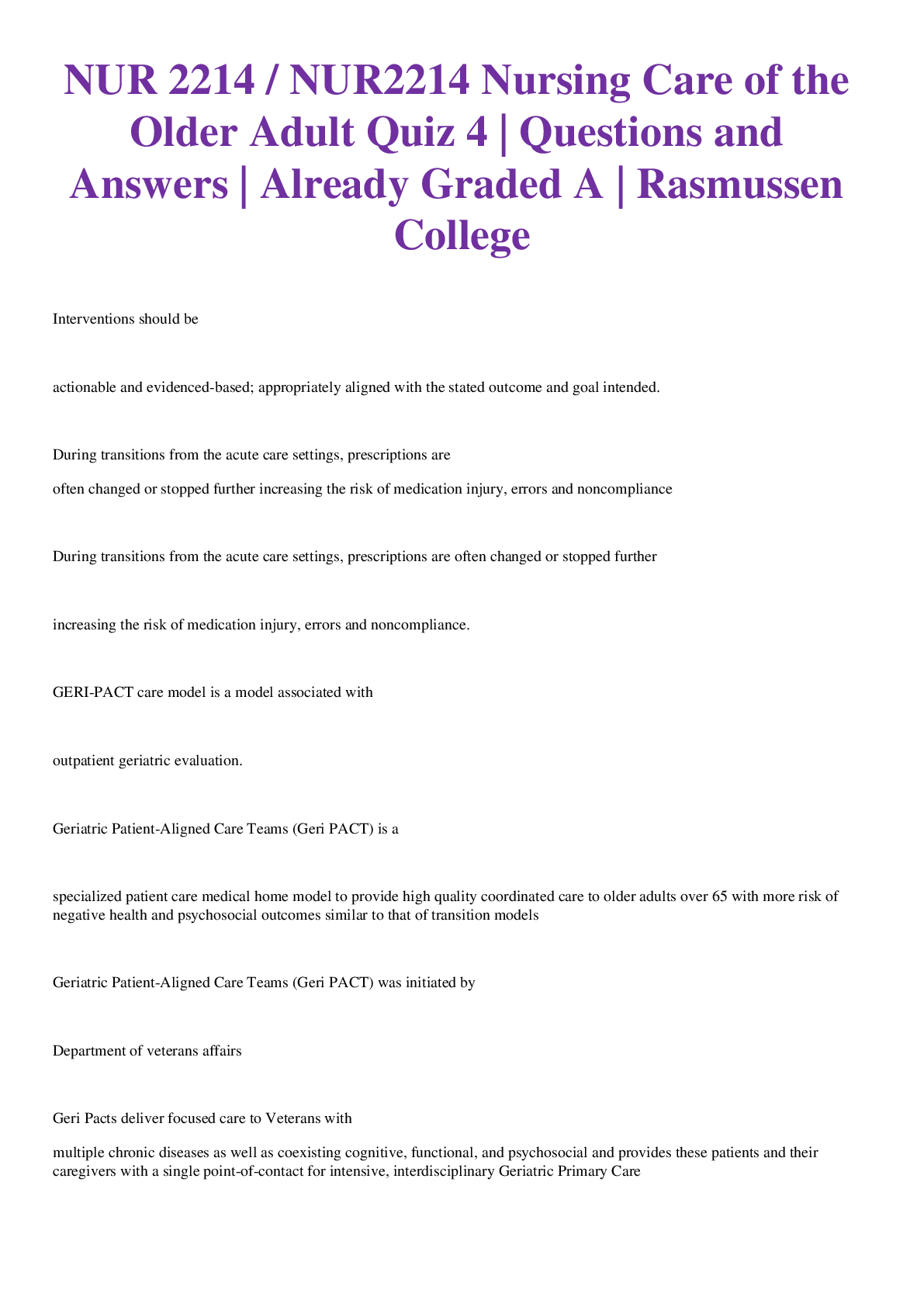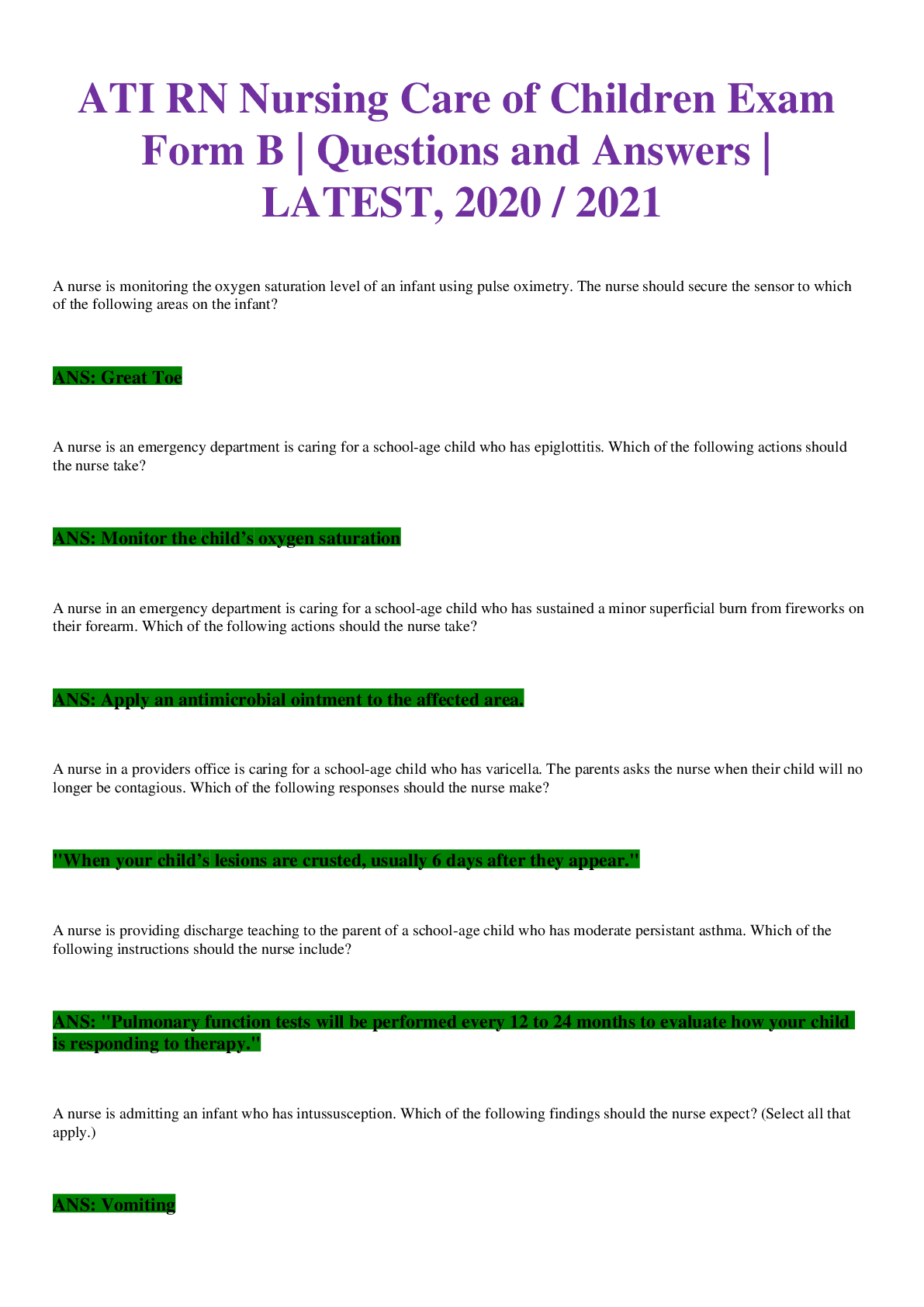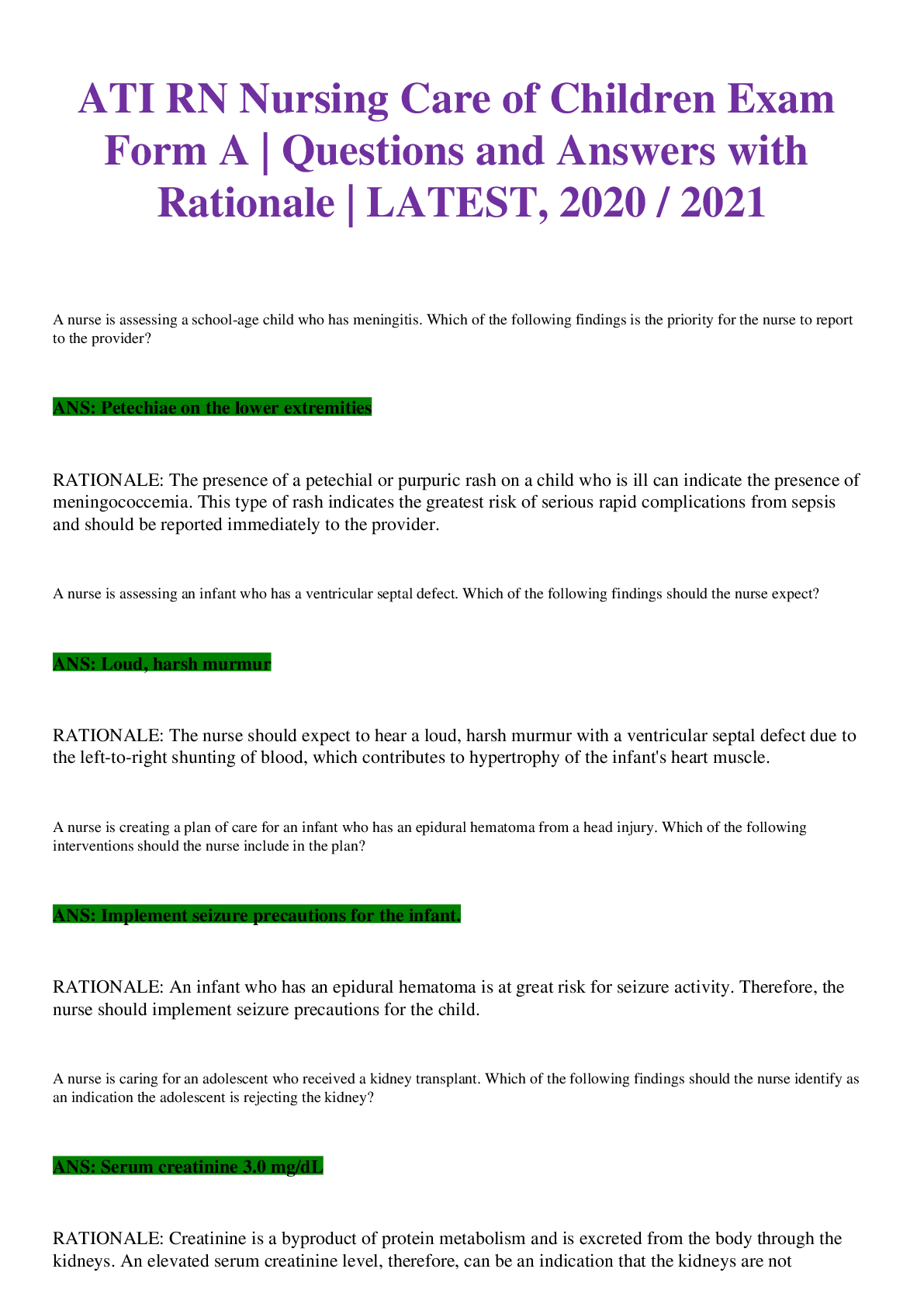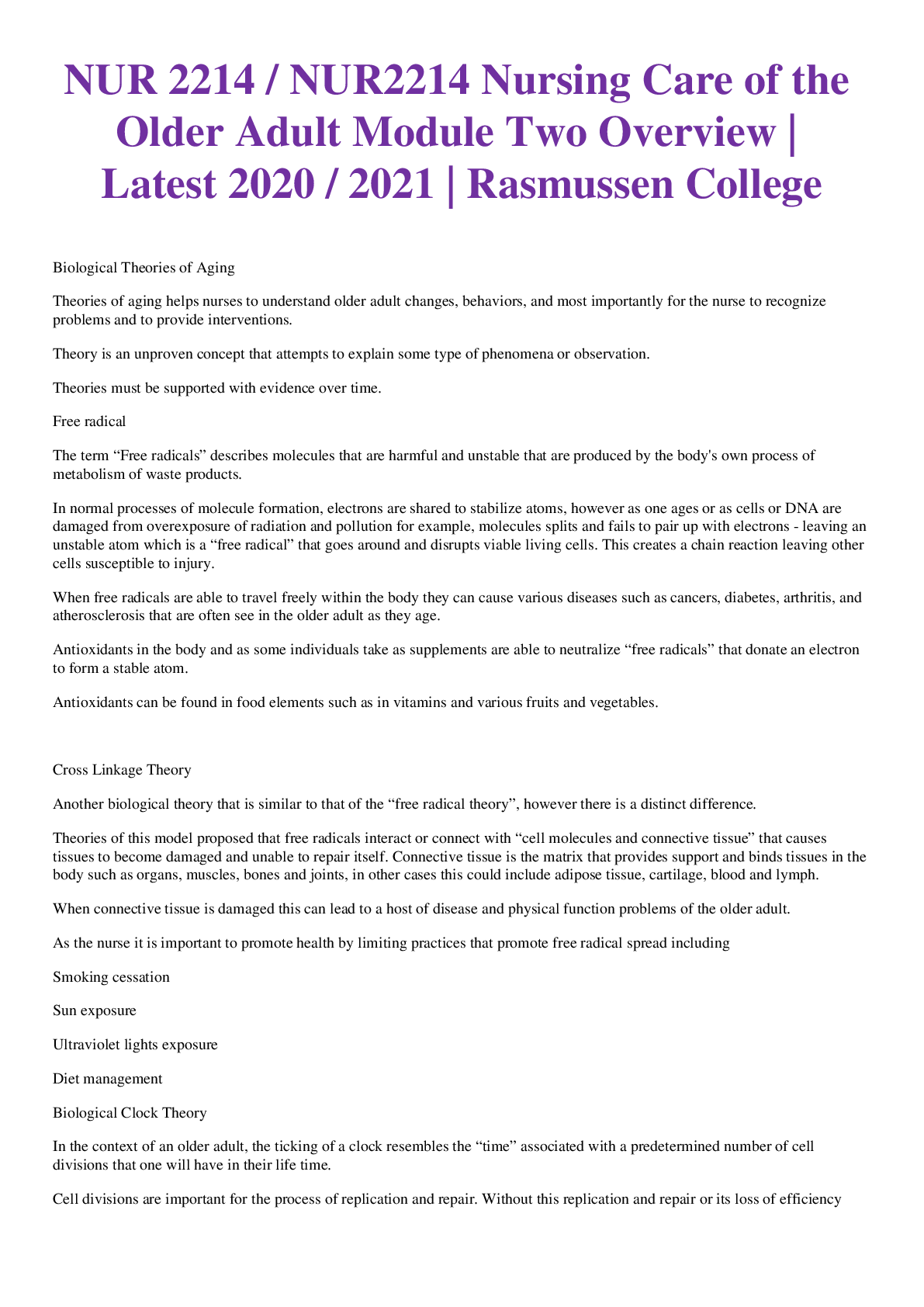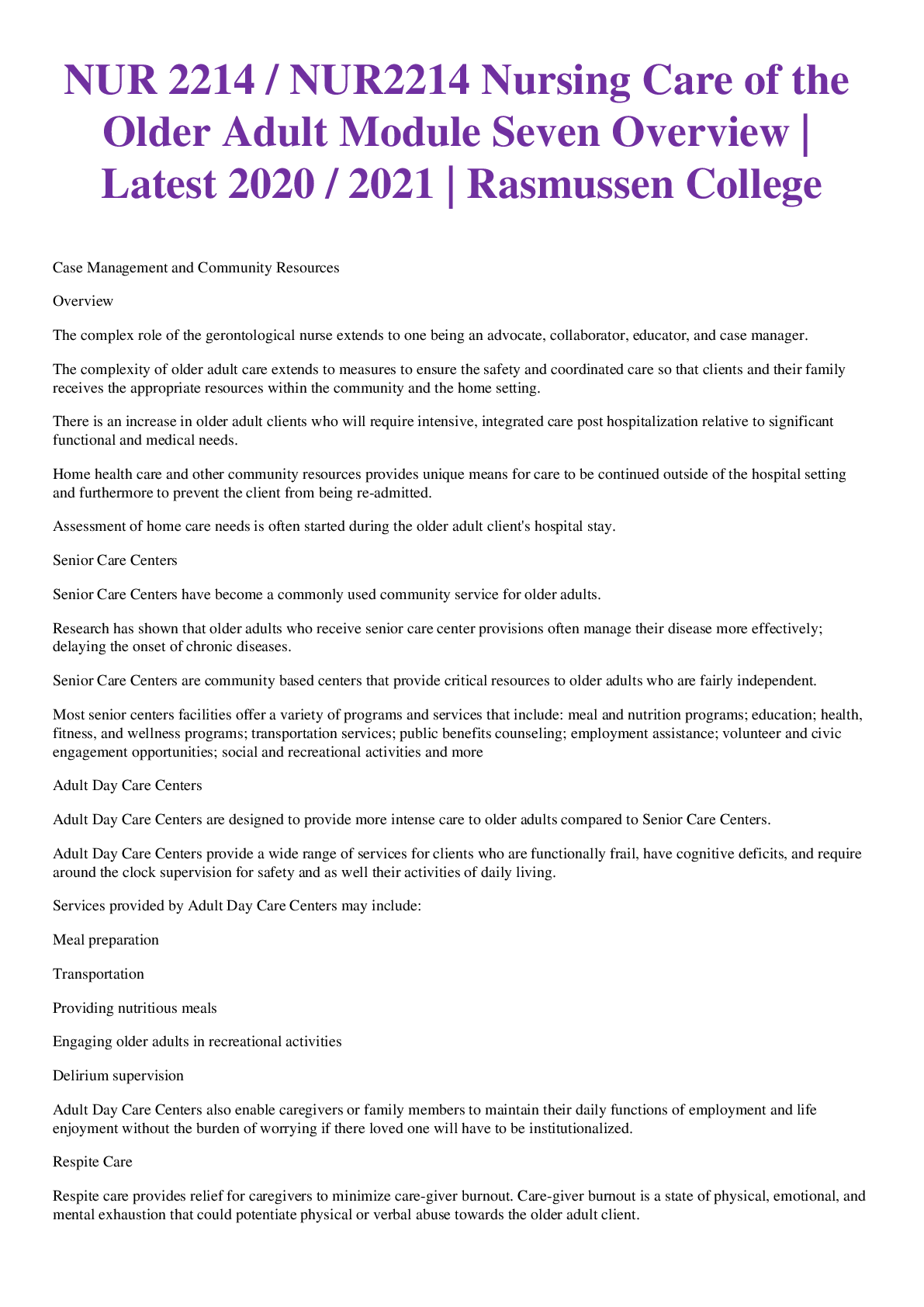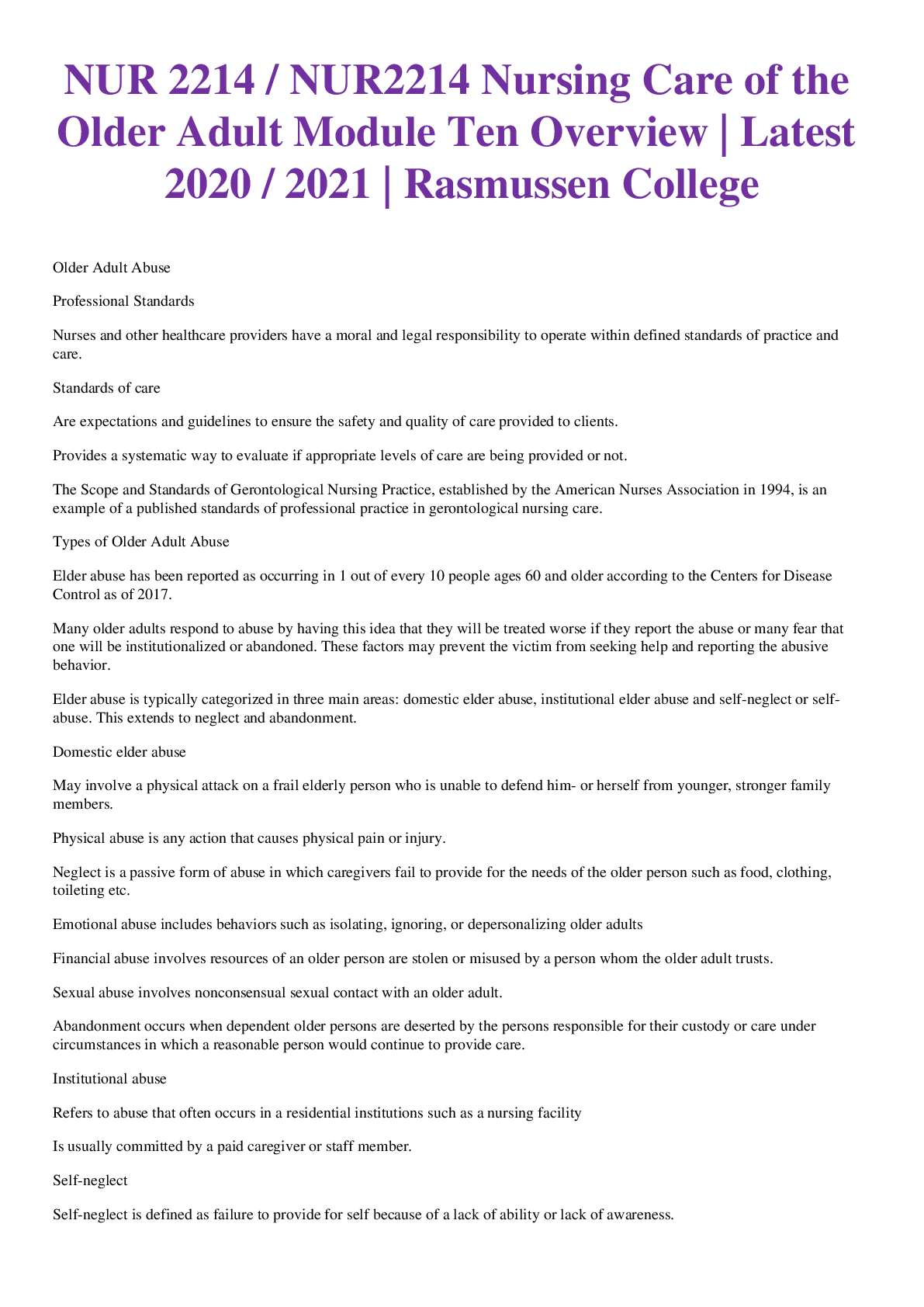Health Care > EXAM > ATI Nursing Care of Children: (ALL: Book, adaptive quizzes, assessments A & B) ATI Nursing Care of C (All)
ATI Nursing Care of Children: (ALL: Book, adaptive quizzes, assessments A & B) ATI Nursing Care of Children Test Bank: Questions & Answers: Latest Updated A+ Score Solution
Document Content and Description Below
A nurse is talking with the parent of an infant during a well-child visit. The parent states, "My 6-year-old started wetting the bed after we brought his baby sister home. He hasn't done that in over ... a year." The nurse should recognize that this behavior by the sibling is an indication of which of the following defense mechanisms? A. Regression B. Repression C. Rationalization D. Identification (Ans- Regression A nurse is assisting with the admission of a child who has a urinary tract infection (UTI) and a history of mylemeningocele. After the child's admission history is complete, which of the following actions should the nurse recommend? A. Attach a latex allergy alert identification band B. Initiate contact precautions C. Post signs in the clien't bathroom to strain the client's urine D. Administer folic acid with meals (Ans- Attach latex allergy alert identification band A nurse is assisting with the care of a 3-month-old infant who is postoperative following a cleft lip and palate repair. Which of the following items should the nurse use to protect the surgical site? A. Clove-hitch limb restraints B. Jacket restraint C. Mummy restraint D. Elbow restraints (Ans- Elbow restraints A nurse is reinforcing teaching about exercise with an adolescent client who has type 1 diabetes mellitus. Which of the following points should the nurse reinforce? A. "Before engaging in physical activity, you should inject insulin into a muscle group that you will be using during the activity." B. "You should plan to alternate days of vigourous physical exercise with days of increased rest." C. "Plan to avoid partipation in team sports." D. "You might need to decrease your routine insulin dosage before exercise." (Ans- "You might need to decrease your routine insulin dosage before exercise." A nurse is caring for a 4-month-old child who has acute otitis media and a fever of 38.3 C (101 F). Which of the following medications should the nurse administer? A. Diphenhydramine B. Furosemide C. Amoxicillin D. Ibuprofen (Ans- Amoxicillin A nurse is reinforcing teaching with the parents of a 4-month-old infant who has gastroesophageal reflux. Which of the following statements by the parent indicates an understanding of the teaching? A. "I will place my baby on her side when sleeping." B. "I will add 1 teaspoon of rice cereal per ounce to my baby's formula." C. "I will decrease the number of feedings my baby receives per day." D. "I will give my baby loperamide with each feeding." (Ans- "I will add 1 teaspoon of rice cereal per ounce to my baby's formula." A nurse is reinforcing teaching with the guardian of a child who has severe iron-deficiency anemia and a new prescription for ferrous sulfate oral suspension. Which of the following statements by the guardian indicates an understanding of the instructions? A. "I should administer the medication to my child once daily in the morning." B. "Giving my child's medication with orange juice will decrease its effectiveness." C. "I should always administer to my child with a large glass of whole milk." D. "My child's blood count will be monitored regularly for the next several weeks." (Ans- "My child's blood count will be monitored regularly for the next several weeks." A nurse is reinforcing teaching with the parent of a child who has type 1 diabetes mellitus. The nurse is explaining how to manage the child's disorder during an illness such as a cold. Which of the following statements by the parent indicates an understanding of the teaching? A. "I'll reduce my child's food intake." B. "I'll check his blood glucose more often." C. "I'll limit his fluid intake between meals." D. "I won't administer his long-acting insulin dose." (Ans- "I'll check his blood glucose more often." A nurse is observing a 6-month-old infant during a well-child visit. Which of the following motor activities should the nurse expect the infant to have achieved A. Sitting alone B. Attempting to stack objects C. Picking up small objects with a crude pincer grasp D. Turning from back to stomach (Ans- Turning from back to stomach A nurse is observing the behavior of a 2-year-old child. Which of the following actions should the nurse expect to observe when the child is in an activity room with other toddlers? A. Playing a simple game with another child B. Engaging in play near other children C. Sharing crayons with another toddler D. Jumping on 1 foot without help (Ans- Engaging in play near other children A nurse is assisting with evaluating an adolescent client who was treated for syphillis. Which of the following indicates the treatment was effective? A. The client reports an episode of fever for 24 hours B. The chancre heals and disappears C. The client denies vaginal discharge D. The lesions become gangrenous and slough off (Ans- The client reports an episode of fever for 24 hours A nurse is reinforcing teaching with the parent of a toddler who is hospitalized and has varicella. Which of the following points should the nurse reinforce? A. "You will need to wear a surgical mask when you are in the room." B. "Your toddler will be unable to leave the room unless absolutely necessary." C. "The door to your toddler's room can remain open." D. "Isolation precautions will need to begin once the vesicles start to drain." (Ans- "Your toddler will be unable to leave the room unless absolutely necessary." A nurse is caring for a child who has a tracheostomy. Which of the following techniques should the nurse use to suction the child's tracheostomy? A. Insert the catheter to 2 cm (0.79 in) beyond the end of the tracheostomy tube B. Remove the catheter while applying intermittent suction C. Instill 0.9% sodium chloride irrigation to loosen secretions while suctioning D. Continue suctioning until the secretions are removed (Ans- Remove the catheter while applying intermittent suction A nurse is planning to assist with health screenings for a group of young adolescent clients. For which of the following health screenings should the nurse plan to collect data? A. Lead poisoning screening B. Autism screening C. Developmental screening D. Scoliosis screening (Ans- Scoliosis screening A nurse is reviewing the risk factors for the development of congenital heart disease with a client who is planning to conceive. Which of the following conditions should the nurse include as a maternal risk factor? A. Preeclampsia B. Alcohol consumption C. Placenta previa D. Late prenatal care (Ans- Alcohol consumption A nurse is collecting data from a child who is postoperative and received a unit of packed RBCs during a surgical procedure. Which of the following findings indicates the child is experiencing a hemolytic transfusion reaction? [Show More]
Last updated: 9 months ago
Preview 1 out of 285 pages
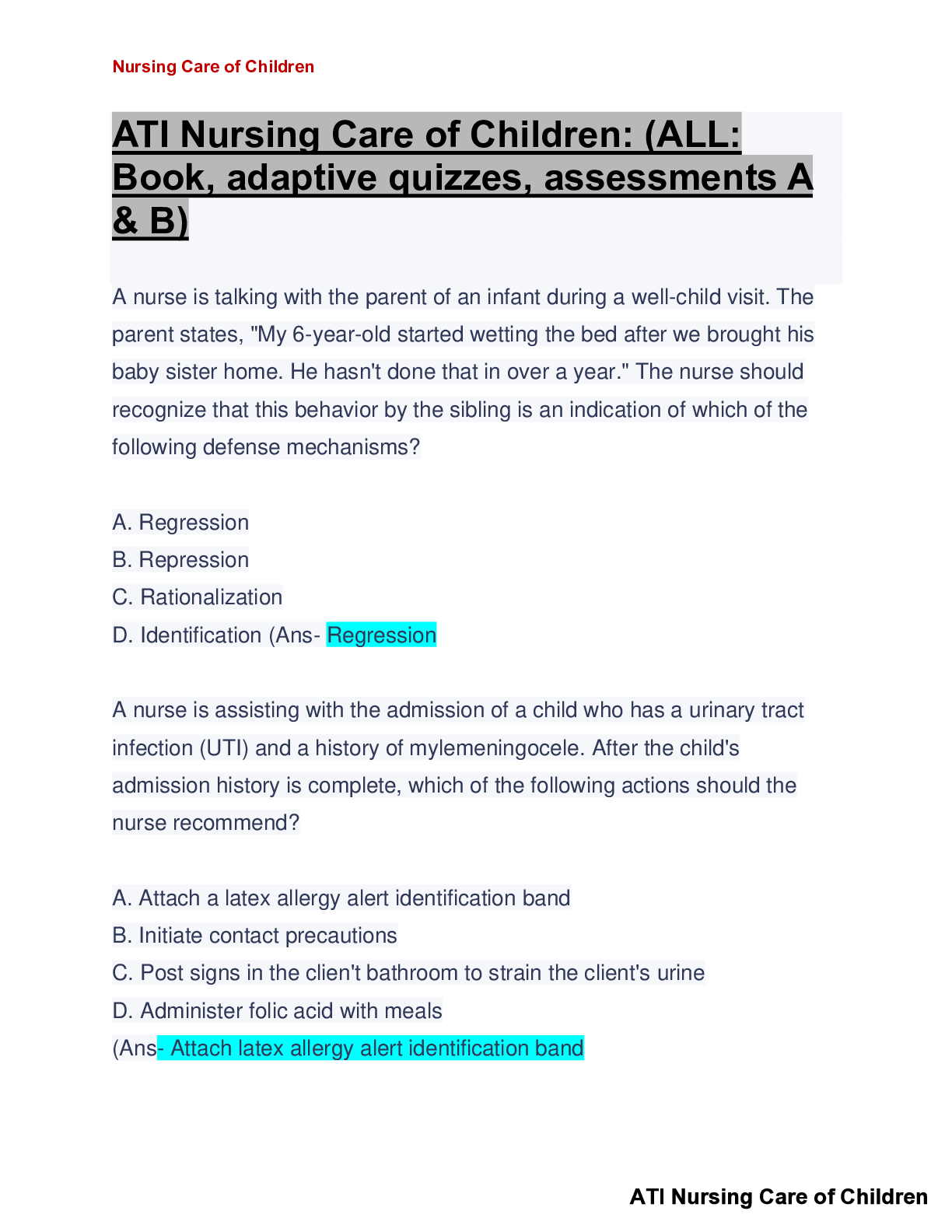
Reviews( 0 )
Document information
Connected school, study & course
About the document
Uploaded On
Aug 01, 2023
Number of pages
285
Written in
Additional information
This document has been written for:
Uploaded
Aug 01, 2023
Downloads
0
Views
35



